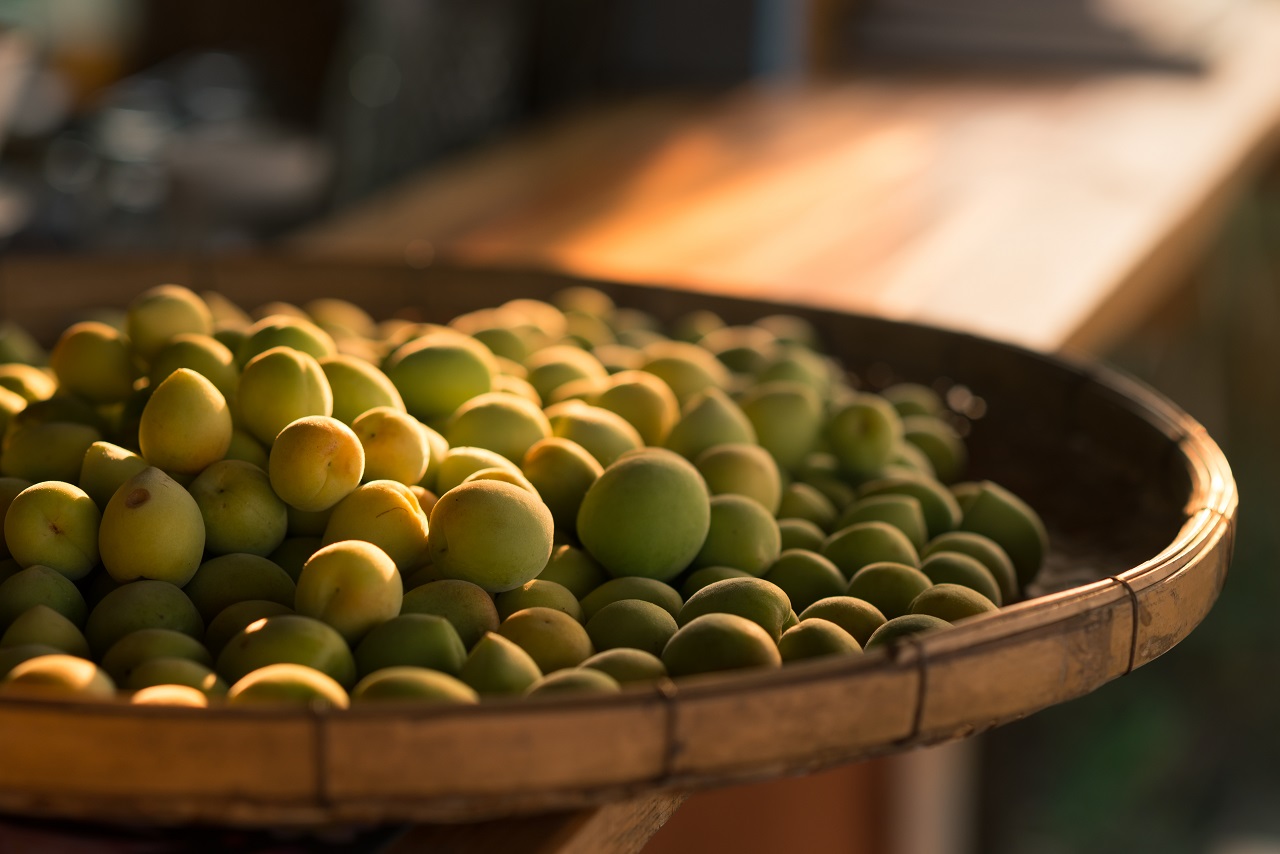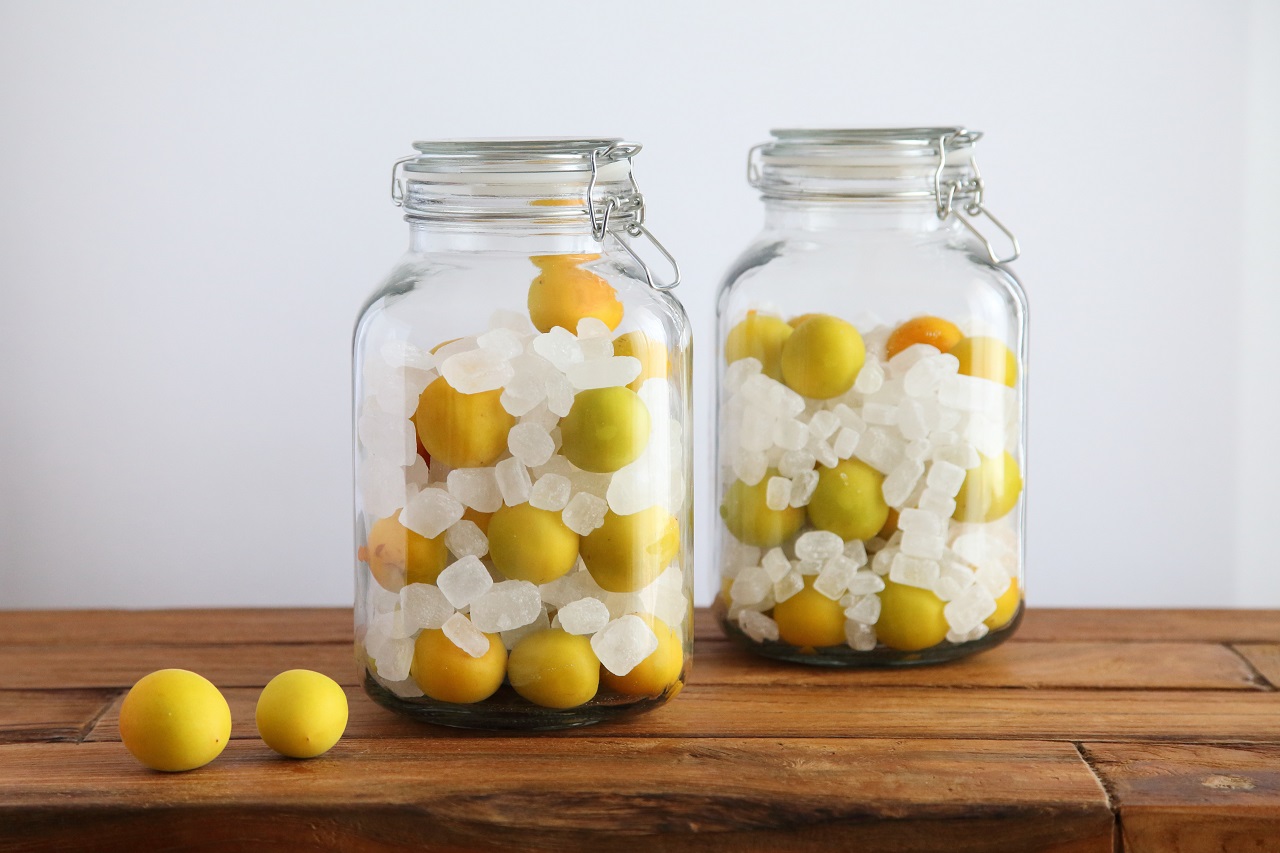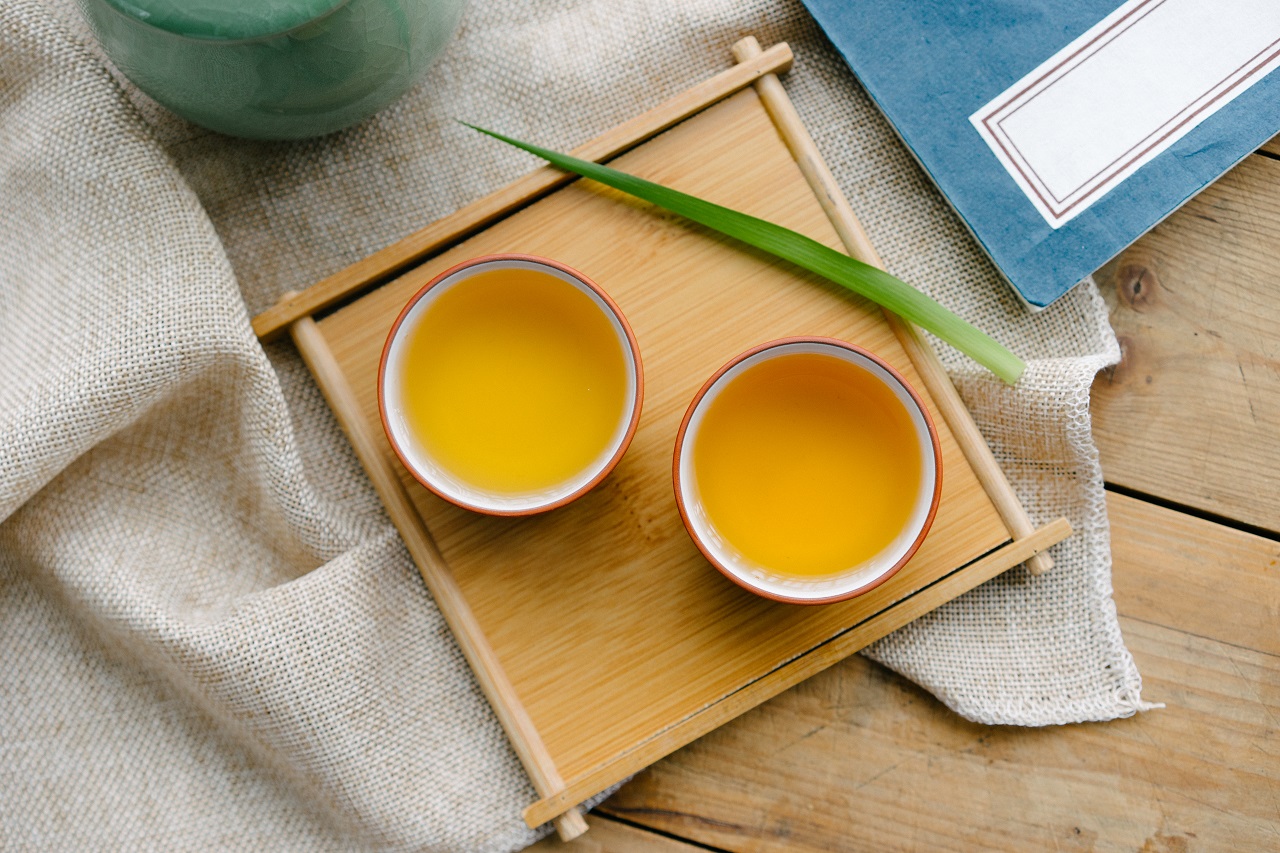Did you know that you can’t produce your own alcohol in Japan? It’s illegal to brew your own beers and wines in Japan without a licence, even for personal consumption, so those little hobby breweries and home beer kits that are so popular in many parts of the world are not allowed over there.
What is allowed, however, is the creation of umeshu, or plum wine. Umeshu is created by combining a spirit with a particular type of plum and sugar, and since you’re not actually making alcohol, but merely converting one kind of alcohol to another, there’s not much that the Japanese authorities can do to stop that.
As a consequence, home umeshu is a popular hobby indeed, in no small part because a batch of umeshu will be ready to drink at about the same time that warm weather starts to kick in… and there are few drinks that are more refreshing during a hot, humid evening than umeshu over ice. One of the things I’ve always enjoyed doing, each time I travel to Japan, is having a couple of glasses of my in-laws’ umeshu as we watch baseball or sumo (or whatever else is on, really), and so, with my own year’s batch of umeshu just about ready for drinking, I thought that I would share the recipe, and dive into the history and culture of one of Japan’s favourite alcoholic beverages.
The many contradictions of plum wine, or umeshu
The first thing you need to understand about umeshu, however, is that the English name for it, “plum wine” is somehow wrong in every way. I mean that quite literally. It’s not wine, since the underlying alcohol is a spirit (typically vodka, but anything with a high enough percentage of alcohol can work, so often people will use brandy, sake or shochu instead). It also has nothing to do with plums. We call the Japanese “ume” a “Japanese plum,” but the fruit is actually closer to an apricot. And, for another layer of inaccuracy, that fruit is more likely to have originated out of China than Japan.
Anyhow, that’s why “plum wine,” is not purple like plums, and that’s why it hits you far harder than you’d expect from wine. Who knows where the English name for it actually came from, the closest comparison from the wine family would be a dessert wine, in terms of potency and sweetness, though umeshu has a much stronger sour element to it (which is why it is refreshing, rather than a dessert thing).
Ume – regardless of where it came from – does have a long history in Japan, however. The first known citation of it was as far back as 750, where one of the oldest collections of waka poetry (court poetry from 6th to 14th century) makes mention of the ume in 118 poems in the collection. In contrast, the sakura blossom – Japan’s national flower – is only mentioned in 42 poems.
Over many years, ume gained a reputation for its nutritional and medicinal qualities. In 960, Emperor Murakami was noted to have recovered from a serious illness by drinking a tea brewed with umeboshi (dried, pickled ume) and kelp. In 984, Japan’s oldest medical publication, the Ishinho, mentions the medicinal properties of ume.
Fast forward to the Sengoku era (the period of warfare in which the Samurai Warriors series is set), and numerous warlords mandated that their vassals plant ume trees as a way of supplying armies with a source of medicine for the soldiers.
Umeshu itself first appears in the year 1697, in a book of Japanese cuisine called “Honcho-shokkan.” There, ume is described as a “medicinal agent that stops the accumulation of phlegm, relieves parched and sore throat, improves the appetite, and dissolves poisons.” A little like how we joke about a good glass of scotch on the rocks solving colds today (or at least that’s the excuse).
Moving on to more recent times. In the 19th century, ume was used to treat intestine inflammation right through to cholera. In 1904 umeboshi was a critical part of the diet that Japanese soldiers had during the Russo-Japanese war. This was the first time that the now-famous bento design of white rice with a pickled ume in the centre (so it looks like a Japanese flag) was conceived.
Then, in 1962, the Japanese law allowed for the home “production” of fruit-based liqueur. Since then, producing your own batch of umeshu every year has become a tradition of many Japanese families.
Make your own umeshu plum wine!
Now that you’ve listened to my little lecture, it’s time to have some fun! Here’s how to make umeshu – and it really is the most ridiculously easy thing to do.
Firstly, the ingredients. You only need three things:
- 1kg of green ume. It must be green (so not actually ripe yet). That leaves a pretty small window of time when you’ll be able to get enough of it together, but it’s only going to work if it’s green ume.
- 300g rock sugar. For some variation, you could mix it up 150g rock sugar and 150g black sugar, but rock sugar should be readily available for most people.
- 2L white spirits. The main thing here is that you need it to be at least 35 per cent alcohol by volume, and preferably not much above that either. But you really can try anything here; I’ve successfully created vodka umeshu, as well as bourbon and rum. They all worked just fine.
Once you have all those ingredients together you’re ready to make some delicious umeshu! It’s a simple recipe, too:
- Wash the ume thoroughly and leave it in a colander to air dry. You also want to use some alcohol to rinse out the jar that you’ll be using, and then give it a thorough clean. After all, what you’re basically doing here is fermenting stuff. You need it to be hygienic.
- Get a skewer and carefully dig the stems that will likely be present in each ume fruit that you purchased from the grocer. This is a time- consuming bit, but it’s not hard work. The stems pop out easily.
- Create layers of sugar and ume in the jar, like you might pasta and meat sauce when creating a lasagne. Then drown the lot of it in the alcohol. With 2L of it, you should be able to make sure all the sugar and ume is completely
- Leave the jar in a cool and dark place for at least three months, but most people would recommend six, and I personally recommend 12. You don’t need to touch it in that time, but sometimes people like to swirl it around every few weeks – more to keep an eye on it than anything else, I suspect.
And it’s done then! Open up the jars, pour the umeshu into whatever containers you plan on using (just be aware that the high sugar content can stick stoppers into bottlenecks if you’re not careful), and you’re ready to enjoy one of Japan’s great drinks.
Once you’re more confident with the production process, you can experiment further. For example, Australian celebrity chef, Adam Liaw, introduced me to a cumquat and honey version, which is an absolute delight. And, of course, you can do this with a lot of other fruits. Limoncello, anyone? Or, for another Japanese flavour… yuzucello! I promise you, that stuff is mana directly from heaven.
One final thing to note: Whatever you do, DO NOT throw those plums you’ve just used for the umeshu creation. You may have been looking to “brew” some top-grade home liquor, but those plums are the bonus delight. They’ll keep for a long time refrigerated and make for an excellent jam ingredient or snack in their own right.
How to enjoy umeshu plum wine
For most people, umeshu is, simply, a refreshing drink. The most common way to enjoy it is either straight (preferably chilled in most cases, but sometimes a heated umeshu will definitely hit the spot) or on the rocks.
But that’s just the start of what you can do with this versatile drink. If the base umeshu is a touch strong for you, then mixing it with soda water is a favourite option. For an even more refreshing option, then why not freeze some (just like you would with a margarita), or pour a little over ice cream?
If you want to go all out, then give aged umeshu a try. After a year of letting your batch rest in the glass jars, transfer the mature umeshu to an oak cask (like you would whisky) to get a more mature flavour.
As for the plums, as I mentioned, they go great in a jam, but another excellent idea is to use them in the cooking of sweets – they go great in a cassata or pound cake, for example.
Japanese culture is one that loves its alcohol – more than I think a lot of people actually appreciate. I know I was shocked to discover just how much alcohol is a part of everyday life over there. Of all the various forms of alcohol that have come out of Japan – sake, shochu, Japanese whisky and beers, I would have to say that umeshu is my favourite. The blend of sweet and sour, combined with the sheer refreshing quality, make it my go-to alcoholic treat. The world is slowly waking up to the appeal of umeshu, and exports are exploding.
The big secret here is that you don’t need to buy it; as you’ve just read, it’s actually so easy to make for yourself, as long as you can get access to those plums (and your local Asian grocery store really should have them when they’re in season). Making your own umeshu is both fun and rewarding, and every year, after I put my batch away, I look forward to breaking it out 12 months down the track and welcoming in the warm Australian seasons with a glass or two of the plum wine.
Please note: This article originally appeared in the September 2021 edition of the Dee Dee Zine. As we are no longer publishing that magazine, we have reprinted this here for posterity.
















Sounds like what we in Poland call “nalewka”. Although we usually don’t serve ours chilled, but we have a ton of varieties.
I’ve not had Nalewka, but yes, it does seem very similar from a quick Google search. I suppose most alcohol-drinking cultures have some variation on this or another, but yeah, Umeshu is my favourite drink of all time 😀